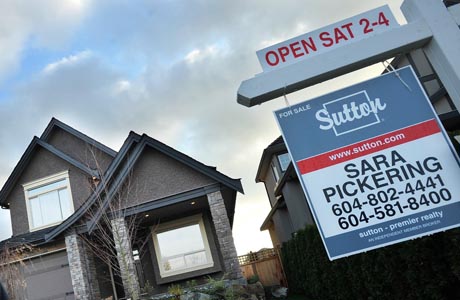Retailer and interior designer turn a newly constructed loft into a Terminus sales-generator
Mike Sasges
Sun

ARCHITECTURAL PHOTOGRAPHS BY MARTIN TESSLER

ARCHITECTURAL PHOTOGRAPHS BY MARTIN TESSLER

ARCHITECTURAL PHOTOGRAPHS BY MARTIN TESSLER

ARCHITECTURAL PHOTOGRAPHS BY MARTIN TESSLER

ARCHITECTURAL PHOTOGRAPHS BY MARTIN TESSLER

ARCHITECTURAL PHOTOGRAPHS BY MARTIN TESSLER

Nancy Bendtsen and David Nicolay worked together on Terminus
Construction completed, the Terminus developer, Robert Fung of the Salient Group, still has homes in the Gastown new-home project to sell. To create a show home to aid the sales campaign, he turned over a Terminus loft to a Water Street neighbour, Nancy Bendtsen of Inform Interiors, and the project’s interior designer, David Nicolay of Evoke International Design. The commission, Nicolay reports, allowed him ”to showcase my interior design of the suite with amazing furniture and furnishings that enhances the space.” The collaboration, Bendtsen says, meant she could ”display Inform Interiors furniture in a real living space that has an exciting design.” Together, they took on the following questions:
What are the dimensions of the apartment?
The Terminus show home is loft-like, urban and adventurous. It is 11 feet wide, 70 feet long and 18 feet high. The interior design, accordingly, focused on sharing light, borrowing light and getting light further into the apartment with continuous soffit lighting in the hallways. The goal in choosing furnishings was to accent the “daylighting” with warmer task and ambient lighting.
What were the other “unalterables” you had to work with, such as door and window location and developer-provided cabinetry and appliances?
The materials palette for the cabinetry and floor finishes is minimal and neutral, which allowed us to have some fun by selecting vibrant and colourful accent furniture pieces. Other pieces maintained the neutral colour scheme of the residence for a sense of calm, maintaining the open flow of the space.
Given that linearity and that neutrality, what then did you do firstly?
We picked lighting in a variety of scales to respond to the scale of the rooms in which they were placed. For example, we put a small-scale adjustable floor lamp in the den to maximize the space’s flexibility. We used three large-scale pendants in the double-height living room to accentuate the scale of the room and a Bocci chandelier in the double-height entrance to again accentuate the sense of spaciousness.
Were there insoluble challenges?
Our biggest challenge was to determine who the hypothetical home owner would be: single, a couple, a family with a child? We ultimately furnished the area adjacent to the bedroom on the second level of the show home as a home office. This easily could have been a dressing area — or a nursery.
Could whatever you achieved be done with furniture and accessories from the years of the original construction of the Terminus?
The heritage facade, with tall windows on one side of the building, created the rhythm of the units. The interior is modern, as is the furniture. Here the sectional sofa is engaged with the heritage windows but does not obstruct the views. Furniture is a matter of personal taste. So we wouldn’t want to suggest avoiding antiques, but we would limit the use of late Victorian furniture to accent pieces and art work. Comfort in furniture design has come a long way since then.
Could whatever you achieved be done over time, as a household’s time and treasury permit? If so, how?
This project was not meant to be exclusive, and we only touched on a few of the many options for how to lay out the space. But for someone starting out on a budget, there are certain pieces they wouldn’t want to live without. The basic necessities would be a sofa, dining table and a bed. The order in which someone would buy further pieces would depend on individual requirements.
Lastly, what do you want readers to know about your work at the Terminus?
The Terminus condos are larger than one would think. Because we wanted the furniture to demonstrate the size of the space we chose pieces that are very large scale. What other normal condo could take a sectional sofa, for example? Or a king size bed with a large lounge chair and ottoman in the bedroom? The use of large-scale light fixtures also enhances the sense of volume.
© Copyright (c) The Vancouver Sun







